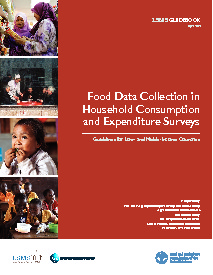
Current practices for collecting consumption data differ widely across surveys, countries, and time, compromising the quality and comparability of resulting data and measures. These guidelines are intended to improve the measurement of food consumption and harmonize practices for designing food consumption modules. They include feedback received from representatives of national statistical offices, international organizations, survey practitioners, academics, and experts across different disciplines (statistics, economics, nutrition, food security, and analysis) and have been endorsed by the United Nations Statistical Commission (edited for language).
AUTHORS
This Guidebook is a co-publication of The Food and Agriculture Organization of the United Nations and The World Bank. It was prepared as part of the work program of the Inter-Agency and Expert Group on Food Security, Agricultural and Rural Statistics and endorsed by the forty-ninth session of the United Nations Statistical Commission, New York, 29 March 2018. The drafting team was coordinated by Nathalie Troubat (FAO) and Alberto Zezza (World Bank).
Issued on
Apr, 2019